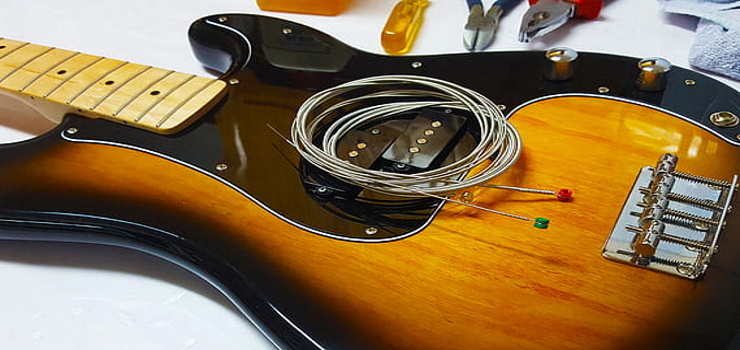To change the strings on your guitar, you’ll need the proper equipment: new strings, wire cutters, and some kind of guitar cleaner. Whether you’re a beginner or an expert player, restringing a guitar is something that you need to learn. More serious players may need to restring their guitars every month while regular players should get theirs restrung at least every 6-8 weeks.
While you can get your guitar restrung at a local store, this tends to cost a lot in service charges. Learning to do it yourself will grant you more control over the tone of your instrument. Furthermore, it will help you save money that you can reinvest in your music.
After weeks of constant use, your strings are bound to get gummy, grimy or rusty. They may even fall out of tune quickly. In such cases, it is best to change the string to ensure superior performance of the instrument.
While it may seem intimidating, restringing a guitar is actually quite easy. All it takes is a little practice and you’re good to go. We still recommend that you be careful as there can be a lot of tension on the strings which can cause them to snap.
Restringing a guitar basically consists of two parts: removing old strings and adding new ones. Here is our definitive guide on how to restring an electric guitar.
Contents
Related:
Before you begin removing the strings, it is imperative that you get a good look at the condition of the guitar. This helps you determine how the guitar should look after restringing it. In fact, we recommend that you take a picture. This is especially important for beginners who get lost easily.

Before we begin, please note that you can change all the strings at once without it affecting the durability of the guitar. If you want to be extra careful, you can try changing them one at a time. This tends to be easier for beginners.
Note: You can try using a color code for the tuning pegs as they aren’t marked. Beginners can try removing and replacing them one at a time, which means they won’t have to keep track.
In addition, we highly recommend using an electronic tuner, especially for beginners. This helps them get familiar with the tuning process and also ensures that their strings play the correct notes.
Next, all you have to do is repeat these steps for all the strings and use wire cutters to remove the excess string.
All in all, restringing a guitar can be easy once you get familiar with it. At the same time, we recommend that you exercise precaution as it can end up damaging your instrument and hurting you. In the end, it will save you money and will ensure top-notch performance of the instrument.
Copyright © 2024 MSpot. All rights reserved. Privacy Policy & Cookie Disclaimer.
mspot.com is a participant in the Amazon Services LLC Associates Program, an affiliate advertising program designed to provide a means for sites to earn advertising fees by advertising and linking to Amazon.com. As an Amazon Associate, we earn from qualifying purchases.